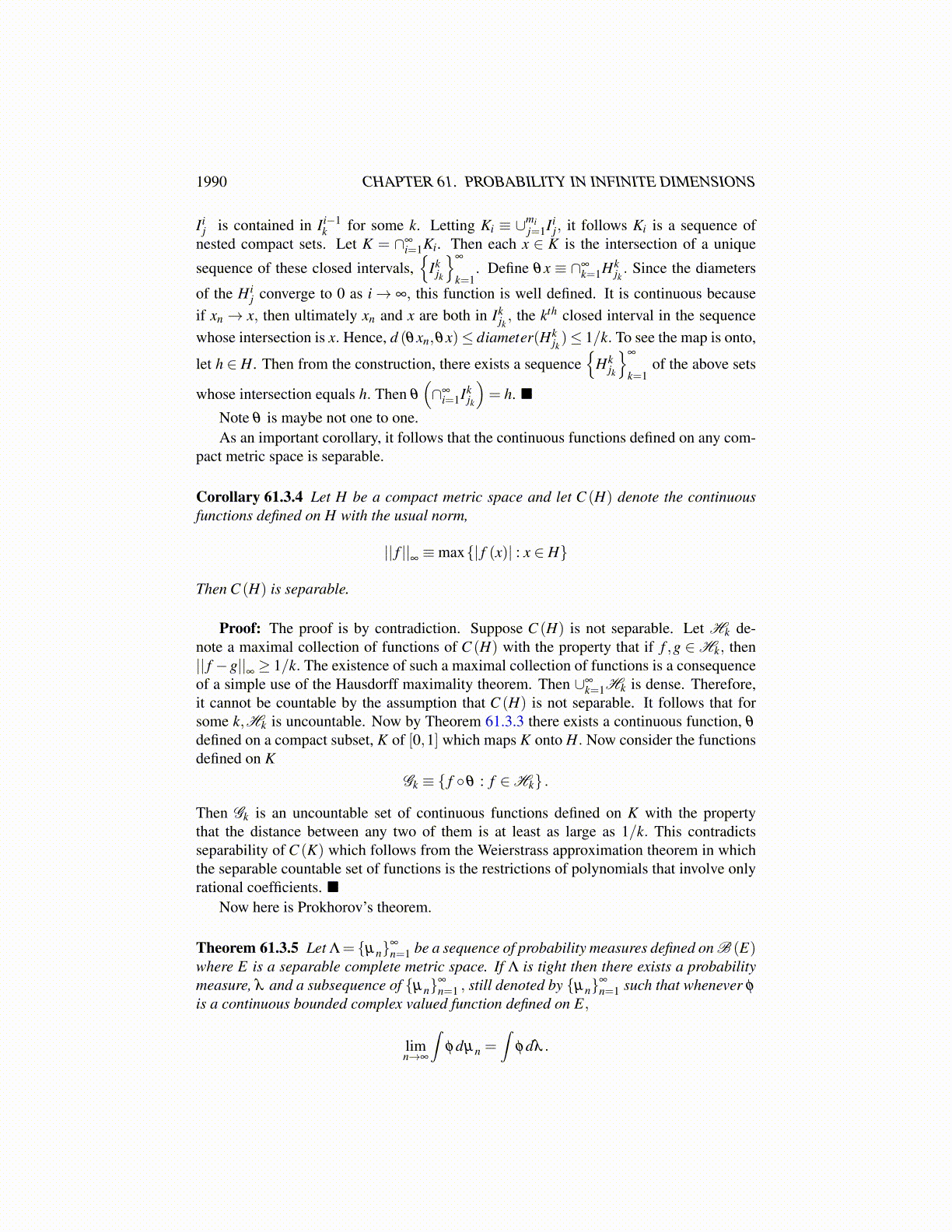
1990 CHAPTER 61. PROBABILITY IN INFINITE DIMENSIONS
showing µ is inner regular on ∪∞k=1Fk. Since µ is outer regular on Fk, there exists Vk such
that µ (Vk \Fk)< ε/2k. Then
µ ((∪∞k=1Vk)\ (∪∞
k=1Fk)) ≤∞
∑k=1
µ (Vk \Fk)
<∞
∑k=1
ε
2k = ε
and this shows µ is outer regular on ∪∞k=1Fk and this proves the lemma.
Lemma 61.2.3 Let µ be a finite measure on B (E) , the Borel sets of E, a separable com-plete metric space. Then if C is a closed set,
µ (C) = sup{µ (K) : K ⊆C and K is compact.}
Proof: Let {ak} be a countable dense subset of C. Thus ∪∞k=1B
(ak,
1n
)⊇C. Therefore,
there exists mn such that
µ
(C \∪mn
k=1B(
ak,1n
))≡ µ (C \Cn)<
ε
2n .
Now let K =C∩ (∩∞n=1Cn) . Then K is a subset of Cn for each n and so for each ε > 0 there
exists an ε net for K since Cn has a 1/n net, namely a1, · · · ,amn . Since K is closed, it iscomplete and so it is also compact. Now
µ (C \K) = µ (∪∞n=1 (C \Cn))<
∞
∑n=1
ε
2n = ε.
Thus µ (C) can be approximated by µ (K) for K a compact subset of C. This proves thelemma.
This shows that for a finite measure on the Borel sets of a separable metric space, theabove definition of regular coincides with the earlier one.
61.3 Tight MeasuresNow here is a definition of what it means for a set of measures to be tight.
Definition 61.3.1 Let Λ be a set of probability measures defined on the Borel sets of atopological space. Then Λ is “tight” if for all ε > 0 there exists a compact set, Kε such that
µ ([x /∈ Kε ])< ε
for all µ ∈ Λ.
Lemma 61.2.3 implies a single probability measure on the Borel sets of a separablemetric space is tight. The proof of that lemma generalizes slightly to give a simple criterionfor a set of measures to be tight.